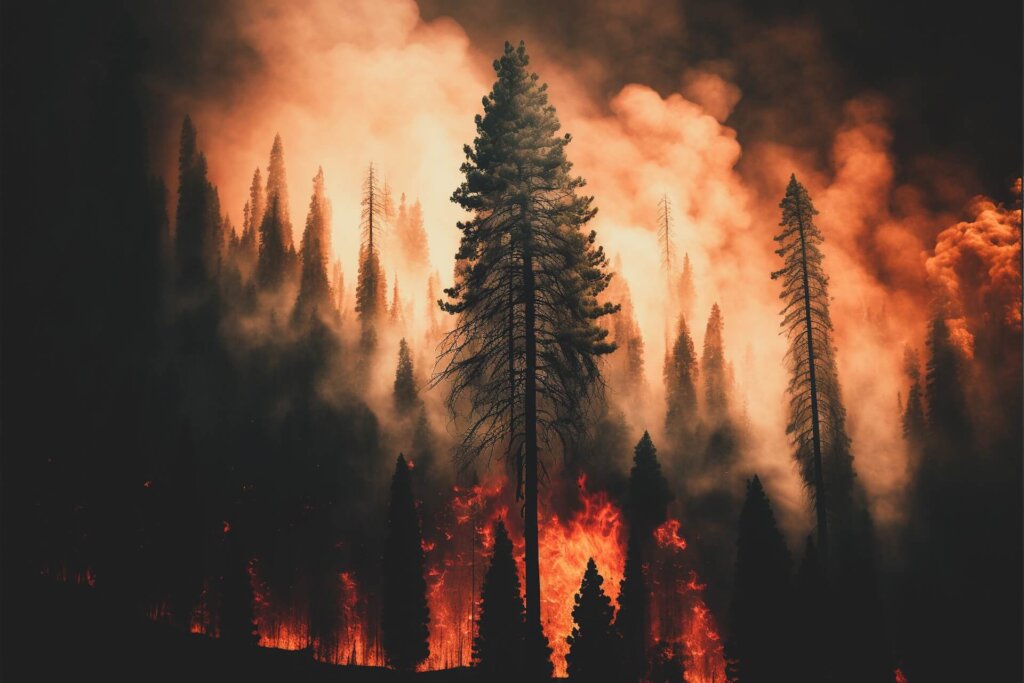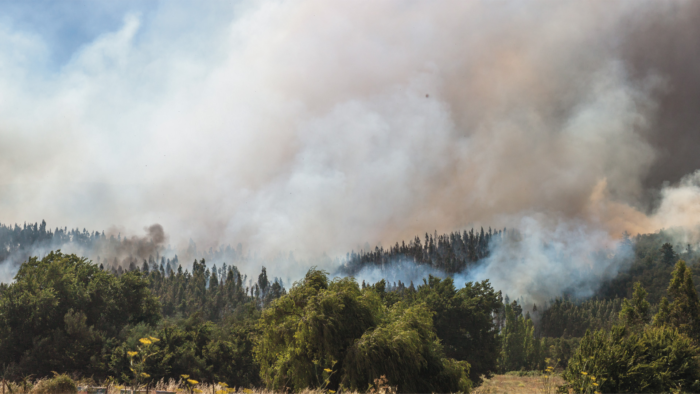While we talk about wildfires, we tend to see each one as a big devastating disaster from start to finish, often without realizing that we can actually distinguish different stages of fire development. But understanding the nature of a fire is incredibly important. Why? Because it can help us find new and more effective ways of preventing and containing wildfires to protect communities and ecosystems.
Table of Contents
ToggleHow Do Wildfires Start?
Fires can start in many ways due to both human and natural causes. Something as small as a carelessly discarded cigarette, a single spark from a malfunctioning machine, or a damaged power line can ignite surrounding vegetation and grow into an uncontrolled fire if it is not detected and contained early. However, not every spark ends up destroying vast areas of land. What is necessary for a fire to keep burning and growing? It needs oxygen and the presence of combustible material, such as dry vegetation, which can fuel and accelerate its spread.
How Many Stages of Wildfire Are There?
From start to finish, we can distinguish four distinctive stages of fire development. These are:
- the incipient stage (also called the ignition or initial stage),
- the growth stage,
- the fully developed stage,
- the decay stage.
Each of these four stages has its own characteristics as well as particular risks and issues that must be addressed accordingly. Understanding them makes it possible to implement the right measures at the right time to prevent the spread of fire and minimize damage.
4 Stages of a Fire
Ignition Stage
This stage marks the very beginning of a fire. Three elements have to combine to start a chemical reaction and produce a flame: heat, oxygen, and fuel (in the case of wildfires, it’s usually dry vegetation and the build-up of dead organic matter on the forest floor).
However, just because the combustible material reaches the ignition temperature and starts burning doesn’t mean that it will turn into a wildfire. At this point, fires are still small and relatively easy to extinguish. In some cases, they may even burn out on their own due to a lack of available fuel. In others, a quick firefighting response can effectively prevent their growth. That’s why implementing preventive measures and effective detection systems is essential to minimize the risk of wildfires and their impact.
Growth Stage
If the fire is not contained in its initial stage, it enters the growth stage. The speed of the fire’s growth depends on a variety of factors, including but not limited to weather conditions and the amount of potential fuel in the area. As the fire spreads and continues to consume surrounding vegetation, it not only grows in size but also intensifies, producing even more heat. This, in effect, further dries out vegetation in the vicinity, making it even more susceptible to fire.
At this stage, the fire becomes highly unpredictable and dangerous as it can rapidly spread over vast areas, trapping people and complicating firefighting efforts. This is the moment when a relatively small fire can quickly transform into a devastating wildfire.
Fully Developed Stage
It’s during the fully developed phase that wildfires become most dangerous and destructive. This happens when the fire reaches its highest temperatures and intensity. Fully developed fires are difficult to control, but proper firefighting techniques can help contain their spread, e.g., by removing fuel from their path.
However, it’s important to keep in mind that heat and smoke can be just as dangerous for the firefighters and everyone else in the vicinity as the flames themselves. That’s why taking the necessary precautions and evacuating residents from high-risk areas is crucial when fighting fully developed wildfires.
Decay Stage
Out of all stages of fire, this is the longest one. It begins when the wildfire starts to run out of either fuel or oxygen, or both. It’s important to monitor the area carefully to prevent the risk of re-ignition. Underground fires are especially dangerous because they can smolder for months without any signs and reappear when conditions on the ground change.
Why Is It Important to Understand the Different Stages of a Fire?
To prevent and fight wildfires understanding the stages of fire development is absolutely crucial. This knowledge should be the very foundation of any firefighting strategy, not only to effectively prevent the fire from spreading and growing more intense but also to ensure the safety of everyone involved in the process. Knowing the characteristics of the four stages, it’s possible to recognize which one the fire is at and take the necessary steps to extinguish it or, at the very least, contain its spread.
Detecting a wildfire during the incipient stage makes it much easier to control. That’s why implementing effective fire and smoke detection solutions is essential to keep communities, homes, and commercial properties protected 24/7. Our automatic detectors rely on AI and machine-learning algorithms to spot potential fire hazards early and send instant alerts to give you enough time to react and evacuate.



